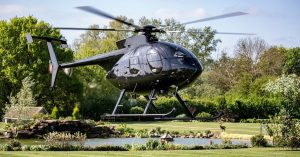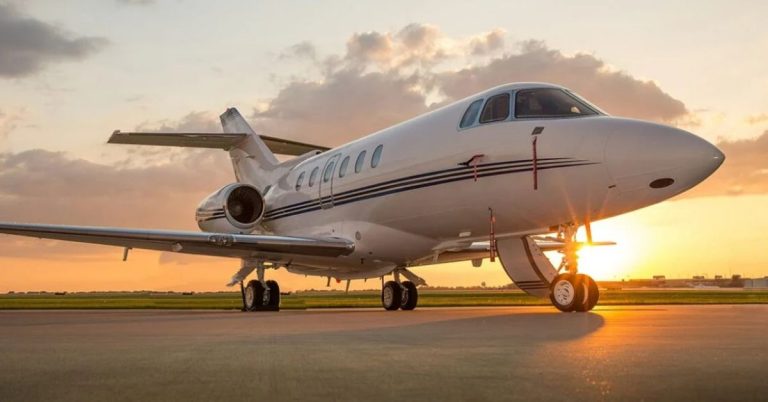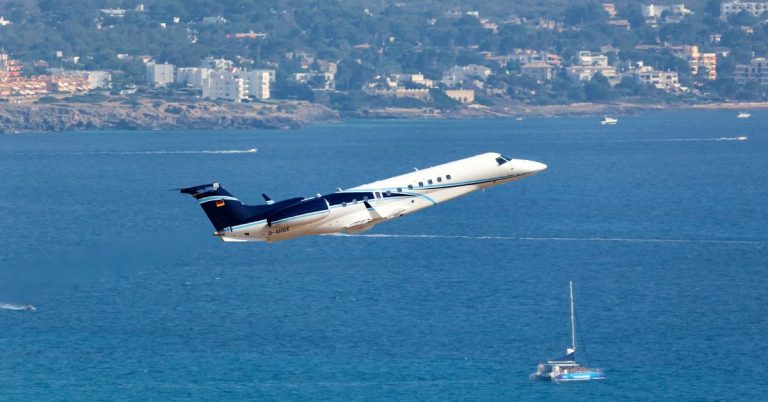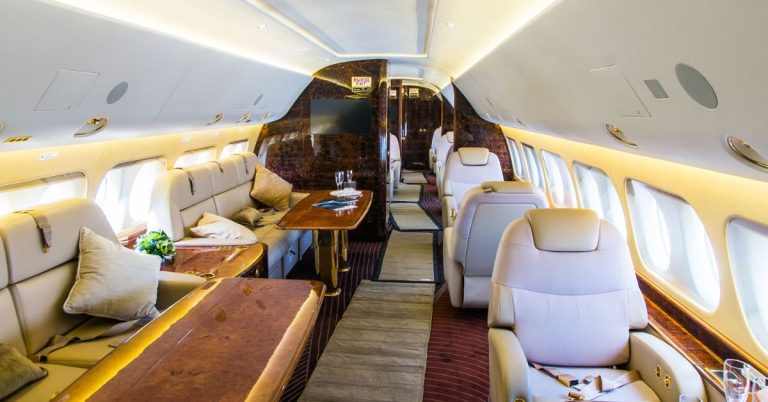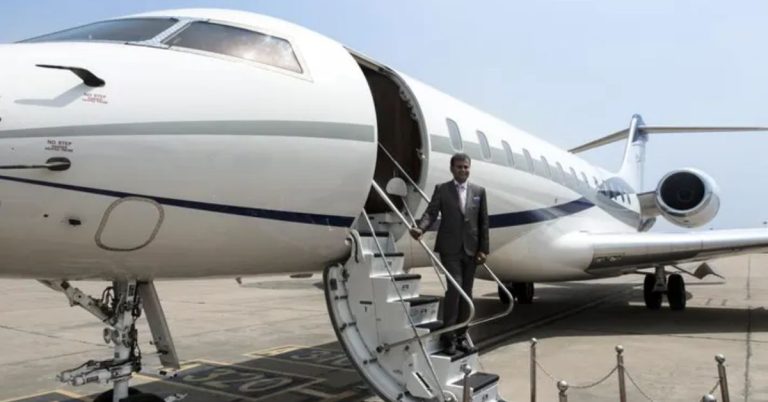The question “Is a 20 year old private jet safe?” has become increasingly relevant in today’s luxury travel and private aviation sectors. With new jet prices exceeding $50 million in some cases, and lead times for factory orders stretching beyond two years, buyers are turning to older, pre-owned aircraft as a strategic alternative.
Aviation safety is fundamentally a function of engineering, maintenance, regulatory compliance, and operational oversight—not merely a function of the aircraft’s age. Yet, the perception of risk associated with older jets persists, especially among first-time buyers and corporate decision-makers. This article aims to demystify that perception through a data-led analysis of aircraft safety, maintenance cycles, cost-benefit metrics, and market behavior related to jets 20 years and older.
This deep dive will help industry professionals, corporate flight departments, and high-net-worth individuals make informed investment decisions in the dynamic pre-owned jet market. We’ll examine current FAA safety data, evaluate the financial logic behind purchasing older aircraft, and assess how maintenance programs, retrofits, and operational profiles influence airworthiness.
Is a 20 year old private jet safe? With the right oversight and upgrades, the answer may be far more positive than conventional wisdom suggests.
Is a 20 Year Old Private Jet Safe in 2025? Market Data, Safety Trends, and Operational Realities
Private Jet Safety by Age: A Strategic Overview
In 2025, the question “Is a 20 year old private jet safe?” sits at the center of a growing industry debate. As private aviation demand climbs and new aircraft backlogs increase, more operators and buyers are shifting attention to older private jets, particularly those aged between 15 and 25 years.
Rather than relying on assumptions, this section examines the hard data: aircraft safety statistics, market behavior, regulatory oversight, and operational profiles that determine whether a 20-year-old jet is a risk or a strategic asset.
1. Aircraft Age vs. Safety: What the Data Really Shows
Safety in aviation is determined by a combination of engineering quality, regulatory compliance, operational discipline, and proactive maintenance—not solely by age. For those evaluating specific models, this guide on the safest private jets in the world offers valuable insight.
- FAA and EASA regulations require regular airworthiness checks, component inspections, and lifecycle-based overhauls regardless of age.
- According to NTSB data (2020–2024), aircraft age was not among the top five causal factors in private jet accidents. Instead, pilot error, maintenance lapses, and operational mismanagement dominate.
- Jets aged 20 years or more that are enrolled in factory maintenance programs (e.g., MSP, Smart Parts, Engine Assurance Program) show incident rates statistically comparable to newer jets.
Is a 20 year old private jet safe? Yes—if maintained under rigorous oversight and continuous compliance.
2. Market Reality: Demand for Older Private Jets Is Rising
The used private jet market has seen a major shift in the last three years:
- In 2023, 66% of pre-owned jet sales involved aircraft older than 15 years, with 30% over 20 years old (AMSTAT data).
- Popular legacy models like the Gulfstream GIV-SP, Bombardier Challenger 604, and Dassault Falcon 900B remain active in global fleets, with resale values holding due to availability and refurbishment potential.
- Tight OEM production capacity and long delivery lead times (24–36 months for new jets) continue to push buyers toward 20-year-old aircraft that are readily available, especially for charter use and fleet supplementation.
For cost-conscious operators, a 20-year-old private jet may be the only viable path to immediate fleet expansion or ownership entry. Here’s where private jet owners typically keep their aircraft.
3. Cost Efficiency vs. Safety Risk: A Balanced Evaluation
The financial logic of older private jets is compelling—when balanced against proper safety investments.
| Metric | New Super-Midsize Jet | 20-Year-Old Equivalent |
|---|---|---|
| Purchase Price | $22M–$28M | $4M–$8M |
| Annual Operating Cost | $1.5M–$2.5M | $2.0M–$2.8M* |
| Required Upgrades | Minimal | $0.5M–$2M |
| Typical Charter Revenue | $3,500–$5,000/hr | $3,000–$4,000/hr |
*Due to higher maintenance and fuel inefficiency, older jets may cost slightly more to operate—but acquisition savings can offset these expenses over time.
Charter operators often find 20-year-old private jets safe and profitable, especially with low acquisition costs and stable demand for business-class travel.
4. Operational Life and Maintenance Discipline
Most business jets are engineered for a 30,000–40,000 flight-hour lifespan. At 20 years of age, many aircraft fall between 8,000 and 12,000 hours—leaving significant usable life, provided they undergo:
- D-checks and structural inspections
- Engine overhauls at scheduled intervals
- Avionics and cockpit modernization (e.g., ADS-B Out, WAAS GPS)
- Noise compliance upgrades for Stage 4/5 airports
OEM support and authorized service centers continue to back these aircraft, especially for platforms still in active production or with common part availability.
This makes the 20-year mark less of a safety cliff and more of a maintenance checkpoint—manageable with the right capital planning.
5. Most Reliable 20-Year-Old Private Jet Models in 2025
These legacy aircraft have demonstrated strong performance and post-retrofit viability:
| Model | Entry Year | Typical 2025 Use Case |
|---|---|---|
| Gulfstream GIV-SP | 1997–2003 | Transcontinental corporate flights |
| Challenger 604 | 1998–2006 | Charter operations and medevac missions |
| Falcon 900B | 1991–1999 | Executive fleets in Europe and Asia |
| Citation X | 1996–2008 | High-speed regional travel |
| Learjet 60 | 1993–2007 | Fractional ownership and short-haul routes |
Buyers asking “Is a 20 year old private jet safe?” should evaluate these models based on logbook history, upgrade investments, and operator reputation—not just the year of manufacture.
To better understand their classifications, see this guide to the different types of private jets.
6. Safety Is Not Defined by Age—It’s Defined by Oversight
So, is a 20 year old private jet safe? Based on FAA protocols, accident data, operator experience, and market behavior—the answer is yes, with qualifications:
- Maintenance discipline must be strict and documented
- Modernization upgrades should be completed for avionics and regulatory compliance
- Insurance and financing may require higher diligence but are widely available for well-maintained jets
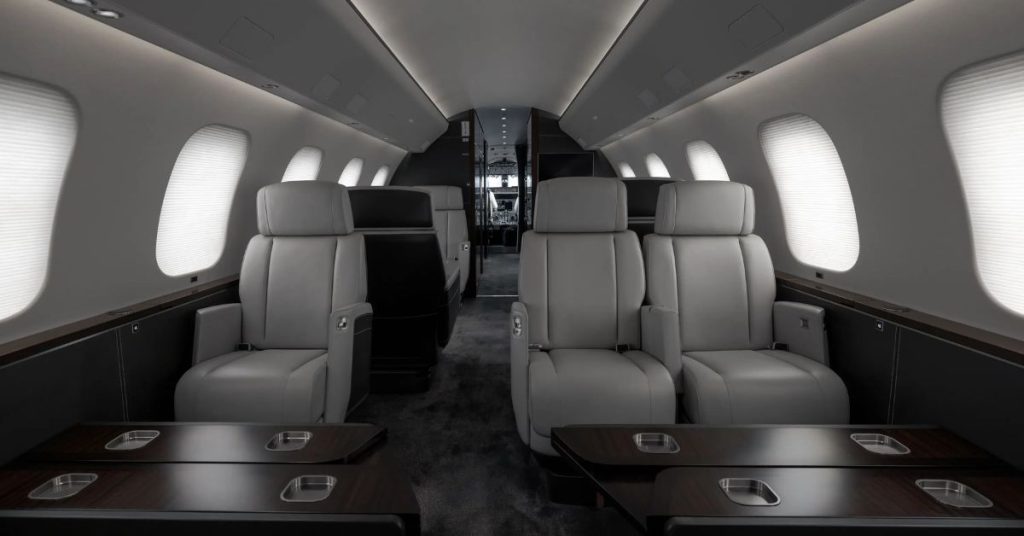
For buyers, fleet managers, and charter operators, older aircraft present a cost-effective, compliant, and operationally reliable solution in today’s constrained aviation economy.
Regulatory, Technical, and Maintenance Standards That Define Jet Safety
The Framework Behind Safe Operations of Older Private Jets
To determine if a 20 year old private jet is safe, one must look beyond the age on the aircraft registration. True safety is achieved through regulatory compliance, structured maintenance programs, and technical oversight. Regulatory bodies such as the Federal Aviation Administration (FAA) in the United States and the European Union Aviation Safety Agency (EASA) globally provide the legal framework to ensure that aging aircraft remain airworthy through every flight hour.
Mandatory Inspections: Age Doesn’t Equal Exemption
Older private jets must undergo routine and lifecycle-specific inspections, regardless of operational usage. These inspections are categorized as A, B, C, and D checks, increasing in complexity and cost:
- A-Check (every 200–400 flight hours): Basic visual and operational checks
- C-Check (every 18–24 months): More detailed inspections including structural and system reviews
- D-Check (every 6–10 years): Full teardown inspection—required for many jets around the 20-year mark
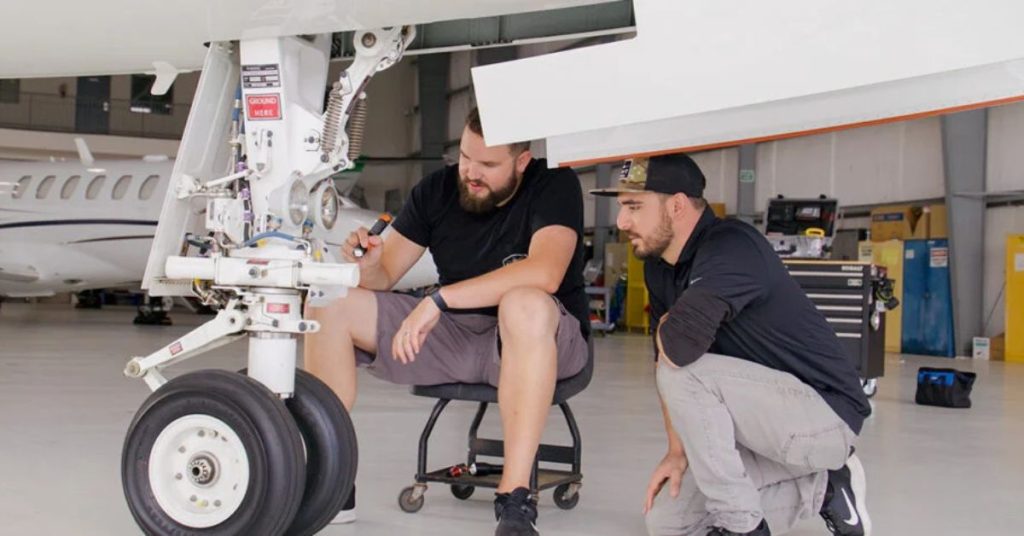
A 20-year-old jet that has recently completed a D-check and complies with all airworthiness directives (ADs) can be considered fully safe and compliant by FAA/EASA standards.
Airworthiness Directives and Service Bulletins
Regulators and manufacturers regularly issue Airworthiness Directives (ADs) to address known risks—especially in older airframes. Compliance with these directives is not optional. Non-compliance can result in immediate grounding of the aircraft.
Manufacturers also issue Service Bulletins (SBs), some of which become mandatory when adopted into regulatory oversight. For 20-year-old jets, updated SBs may cover:
- Structural reinforcement for fatigue-critical areas
- Replacement of obsolete or fire-prone wiring bundles
- Retrofitting ADS-B Out avionics and new transponders for global tracking compliance
FAA Part 91 vs. Part 135: Safety Management Matters
Another factor in private jet safety by age is the operational certification type:
- Part 91 (non-commercial): Privately operated, owner-managed flights
- Part 135 (commercial): Charter services with heightened safety and maintenance requirements
Jets operated under Part 135 are subject to more frequent inspections, crew training mandates, and maintenance oversight, making these older aircraft often safer than those operated under private ownership alone.
Real-World Compliance Example
A 2003 Bombardier Challenger 604, if operated under Part 135, must maintain real-time maintenance tracking, regular crew certifications, and adherence to 100-hour inspections. Even at 20+ years old, it can maintain a perfect safety record and be cleared for global operations—including European and Middle Eastern airspace with strict noise and avionics requirements.
Regulation Translates Age Into Safety
The regulatory system is designed to neutralize age as a risk factor. Whether a jet is 2 years old or 20, the safety question is resolved through:
- Documented compliance with airworthiness directives
- Scheduled major inspections, especially C and D checks
- Certification under operational regimes that require continuous safety oversight
Is a 20 year old private jet safe? From a regulatory and maintenance standpoint, it absolutely can be—provided it is consistently managed within the required standards.
Who Buys 20-Year-Old Private Jets? Ownership Profiles and Strategic Use Cases
Buyer Profiles: Who Invests in Older Private Jets?
Understanding who buys a 20-year-old private jet provides further clarity to the question, “Is a 20 year old private jet safe?” The answer is not only technical—it’s commercial. Buyers of legacy jets are typically experienced aviation operators, not casual luxury consumers—though some high-profile individuals own as many as 10 private jets. Their profiles reflect both strategic intent and cost-managed expectations.
- Charter Operators and Fleet Managers
Charter companies often acquire older aircraft to expand capacity without the capital burden of a new jet. These buyers prioritize:- Safety through strict maintenance
- Consistent dispatch reliability
- ROI through charter utilization (often $3,000–$4,000/hr revenue)
- Corporate Flight Departments
Many celebrities also maintain their own private jets for both convenience and brand prestige. In this case, a 20-year-old private jet provides cost-efficient access to mid- and long-range routes while maintaining privacy and scheduling flexibility. Safety is ensured through FAA-mandated inspections and internal SMS (Safety Management Systems). - High-Net-Worth Individuals (HNWIs)
For individuals upgrading from fractional ownership or light jets, a well-maintained legacy aircraft—such as a 2004 Gulfstream GIV-SP—offers cabin comfort, global range, and reliability at less than one-third the price of a new jet. Explore how billionaires upgrade their fleets with luxury private jets. - Government and NGO Use
Select governments and humanitarian organizations acquire and retrofit older private jets for medevac, diplomatic transport, or cargo missions. These aircraft are maintained under strict compliance, proving again that age is not a disqualifier for safety.
In India, air ambulance services often rely on older private jets with specialized retrofits.
Use Case Scenarios
- Regional Business Hubs: Older jets are ideal for domestic U.S. and intra-Europe routes, where runway infrastructure supports midsize and super midsize aircraft.
- Supplementary Lift: Charter operators or corporations often use 20-year-old jets as backup aircraft during high-demand seasons.
- Special Missions: Medical transport, aerial surveillance, or executive shuttle programs frequently operate with older jets due to their lower capital investment and high reliability.
A Safe Asset for Experienced Operators
Buyers of 20-year-old private jets typically possess the technical knowledge, operational frameworks, and financial motivation to keep the aircraft safe and fully compliant. These jets are not abandoned assets—they are strategic tools used by organizations that require reliability, range, and cost efficiency. Check out the best private jets available today for high performance and long-term value.
In short, is a 20 year old private jet safe? When in the hands of a disciplined operator with proper oversight, it is not only safe—it is commercially valuable.
Insurance and Financing Factors for 20-Year-Old Private Jets
Safety as Measured by Insurers and Lenders
When buyers ask, “Is a 20 year old private jet safe?”, underwriters and financiers offer one of the most objective responses—by either approving or rejecting coverage and capital. These decisions are driven by quantifiable risk assessments tied directly to maintenance history, usage profile, and operator competency.
Insurance Considerations: Safety = Compliance
A 20-year-old jet is insurable—but insurers require documented assurance that the aircraft meets current regulatory and safety standards. Key underwriting factors include:
- Maintenance Records: Complete logbooks, recent D-check, and compliance with all airworthiness directives.
- Upgrades: Modernized avionics (e.g., TCAS II, ADS-B Out) and Stage 4/5 noise compliance are often mandatory.
- Operator Profile: Underwriters favor aircraft flown under Part 135 (charter) or professionally managed Part 91 operations with structured SMS programs.
- Flight Hours: Both airframe and engine hours are assessed for potential fatigue risks.
Premiums for 20-year-old private jets are generally 15–25% higher than premiums for comparable newer models, reflecting increased scrutiny—but not necessarily higher risk if the aircraft is well maintained.
Financing Older Jets: Risk-Based Structuring
Aircraft financing institutions consider 20-year-old jets viable assets, but their loan structures reflect reduced resale value and liquidity risk.
Common lending practices include:
- Shorter loan terms (3–5 years instead of 7–10)
- Higher down payments (25–40% for legacy jets)
- Requirement for full records review and independent appraisal
- Preference for aircraft with stable operating history (corporate-owned, managed fleet, or on-engine program)
Some banks may decline financing for jets over 20 years old without a current engine program, as future maintenance exposure becomes harder to predict.
Age Requires Proof, Not Assumption
From an insurance and lending standpoint, the real question isn’t “how old” the aircraft is—but how well it has been managed. A 20-year-old private jet with proper documentation, maintenance, and upgrades can be insured, financed, and operated globally.
Thus, is a 20 year old private jet safe? If insurers and financiers back it—after a full technical and risk audit—the answer is functionally yes.
Future Outlook: Pre-Owned Jet Market and OEM Support
The Aging Fleet Is the Future—Not the Exception
By 2025, the global business jet fleet includes a significant number of aircraft aged 20 years or older. According to data from JetNet iQ and Ascend by Cirium, over 35% of the active global fleet is now older than 15 years, and this percentage continues to rise as delivery delays, cost pressures, and OEM capacity constraints drive demand for pre-owned aircraft.
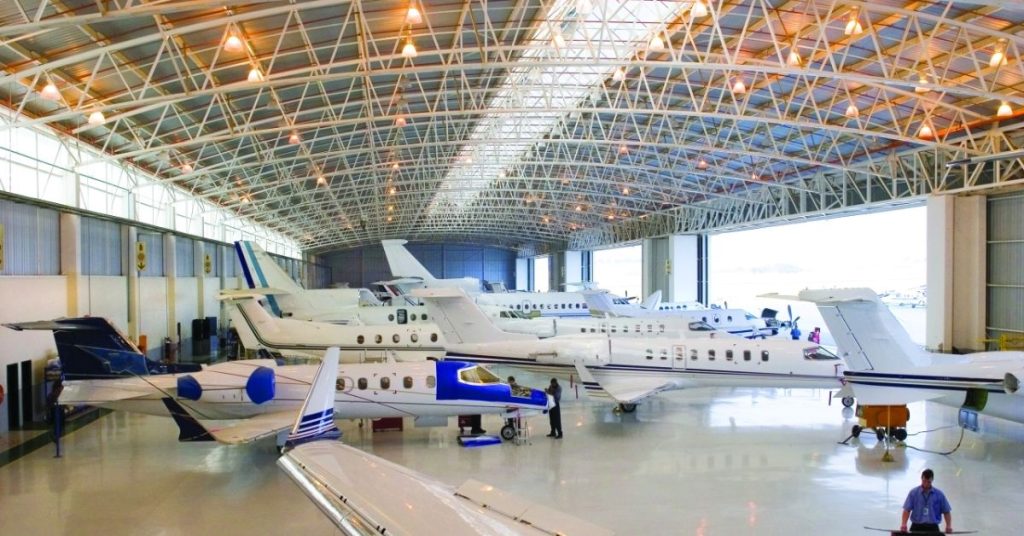
This shift is not a short-term anomaly—it reflects a structural evolution in fleet economics, especially in charter, corporate, and private operations.
OEM Strategies: Continued Support for Legacy Aircraft
One of the clearest indicators that a 20 year old private jet is safe is that manufacturers continue to provide comprehensive support for these platforms.
- Gulfstream Aerospace offers full parts and upgrade services for models like the GIV and GV.
- Bombardier supports legacy aircraft such as the Challenger 604 through Smart Parts and dedicated service centers.
- Dassault Falcon maintains global spares availability and avionics upgrade programs for models like the 900B and 2000 series.
These OEMs view older aircraft not as obsolete, but as ongoing revenue platforms—delivering service revenue, retrofit programs, and lifecycle extension.
Digital Maintenance & Predictive Tools
New technology is improving how operators manage older aircraft. Predictive maintenance software, digital logbooks, and AI-based component monitoring now allow operators of 20-year-old jets to:
- Preemptively detect mechanical wear
- Automate maintenance tracking
- Extend component life safely and cost-effectively
These tools reduce risk, improve dispatch reliability, and further demonstrate that age is no longer a limiting factor—when managed with digital systems.
Summary: The Market Will Normalize Older Jets
As OEMs back legacy fleets and digital oversight becomes standard, the private aviation market is gradually reframing its expectations. The question, “Is a 20 year old private jet safe?”, will increasingly become synonymous with another question: “Is it managed correctly?” The future says yes—older jets are here to stay.
Strategic Summary for Decision Makers
The private aviation industry is evolving. What once may have seemed like a liability—owning or operating a 20-year-old private jet—is now a strategic decision rooted in operational data, regulatory alignment, and financial logic.
Throughout this analysis, one conclusion is clear:
Yes, a 20 year old private jet can be safe—provided it is managed to modern standards.
Key Takeaways:
- Safety is regulated, not assumed: A 20-year-old jet that complies with FAA/EASA mandates, undergoes routine D-checks, and adheres to ADs is legally airworthy and operationally sound.
- Cost-efficiency offsets age: Pre-owned jets deliver access to large-cabin or long-range capability at 30–50% of the new purchase price—while enabling reinvestment into upgrades.
- OEM and digital support extend lifecycle: With factory parts programs and predictive maintenance technology, older jets are being managed with the same precision as newer ones.
- Experienced operators drive performance: Charter companies, corporations, and fractional ownership firms demonstrate daily that these aircraft, when maintained professionally, perform reliably under commercial loads.
For decision-makers evaluating aircraft purchases, fleet planning, or financing strategies, the question is no longer just “Is a 20 year old private jet safe?” It is: “Is it documented, maintained, and managed to meet operational goals?”
With the right oversight, the answer is yes—and the business case is often compelling.
We Want to Hear From You
Have you operated, flown, or purchased a legacy jet? What are your thoughts on the safety and value of older aircraft?
Do you believe a 20-year-old private jet is still a smart investment?
What factors most influence your aircraft selection—age, technology, cost, or compliance?
Share your perspective in the comments below—your insight helps industry peers make better-informed decisions in today’s evolving private aviation market.

